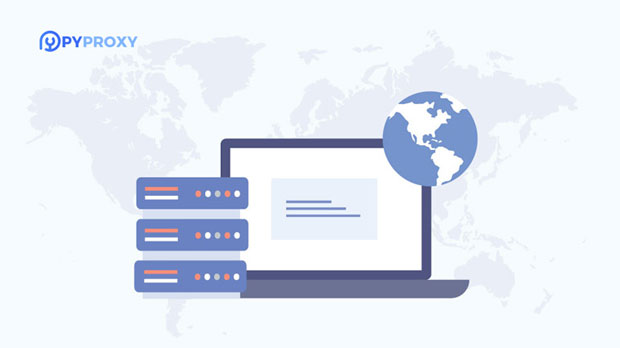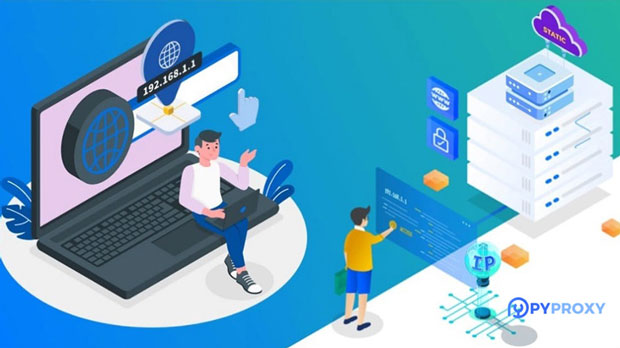A socks5 proxy server is an essential tool for enhancing privacy, securing internet traffic, and bypassing geographical restrictions. Configuring a local SOCKS5 proxy allows you to route your internet traffic through your own server, providing you with control over data transmission while ensuring anonymity. Whether you want to access blocked content, secure sensitive data, or maintain your privacy online, setting up a local SOCKS5 proxy can be a highly effective solution. This guide will walk you through the step-by-step process of configuring a socks5 proxy server on your local machine, ensuring you can leverage its benefits for both security and convenience. What is a SOCKS5 Proxy?SOCKS5, short for "Socket Secure version 5," is a versatile proxy protocol that routes internet traffic through a server, masking the user's original IP address. Unlike traditional proxies that only work with specific protocols (such as HTTP), SOCKS5 works with virtually all kinds of traffic. This makes it a preferred choice for users who require robust privacy and need to route different types of traffic, including web browsing, email, or torrenting, through a single proxy. The SOCKS5 protocol offers several advantages over other types of proxies, including improved security, support for authentication, and the ability to handle more types of internet protocols.Why Use a Local SOCKS5 Proxy Server?Setting up your own local SOCKS5 proxy server brings several advantages. Firstly, it provides more control and flexibility compared to using third-party proxy services. When you configure your own server, you control the hardware, software, and the level of encryption applied to your data. This offers enhanced privacy and security, particularly when handling sensitive information. Additionally, a local SOCKS5 server enables you to bypass geo-restrictions by routing traffic through a specific location, making it ideal for accessing region-locked content.Another benefit is the ability to configure the proxy server for different types of traffic. While other proxy protocols may only support specific types of traffic (like HTTP for web browsing), SOCKS5 works with a wide variety of traffic types, ensuring a seamless experience when accessing different services. Setting Up a Local SOCKS5 Proxy ServerStep 1: Preparing the EnvironmentBefore you begin configuring your local SOCKS5 proxy server, make sure that your environment is ready. You will need a local machine (either a computer or a server) with an internet connection. Depending on the operating system, the steps may vary, but most commonly used operating systems like Windows, Linux, or macOS support SOCKS5 server software.For this setup, you’ll also need software that supports SOCKS5 proxying. There are various open-source tools and libraries available, such as "Dante" for Linux or "Shadowsocks" for multiple platforms. Ensure that you download and install the software package that is compatible with your operating system.Step 2: Installing the SOCKS5 Proxy SoftwareOnce you've chosen the right software, it's time to install it. For example, if you're using Linux, you can use a package manager (such as apt for Ubuntu) to install the necessary SOCKS5 server software. On macOS and Windows, you'll likely need to download the installer from the software provider’s site.Here is an example of how to install SOCKS5 software on a Linux-based system using the package manager:1. Update your system package list: `sudo apt update`2. Install the required software: `sudo apt install dante-server`Once installed, check that the installation was successful by running the server software's version check command.Step 3: Configuring the SOCKS5 ServerAfter installation, the next step is to configure the server. Configuration files are usually located in a directory like `/etc/` or `/usr/local/etc/`. These files are used to define various parameters such as the IP address and port the server listens on, as well as any authentication settings.The most important configuration parameters for a SOCKS5 server are:1. Listening Port: The port on which the server will listen for incoming connections. The default port for SOCKS5 is typically 1080.2. Allowed Clients: Define which IP addresses are permitted to connect to the SOCKS5 proxy server. This is essential for preventing unauthorized access.3. Authentication Settings: Some SOCKS5 servers require user authentication. You can set up user passwords or even integrate with an existing authentication system.4. Logging: Enable logging to monitor server activity, which can be useful for troubleshooting.Here is a simple configuration example:```logoutput: /var/log/socks5.loginternal: 0.0.0.0 port = 1080external: eth0method: username noneclientmethod: none```This configuration allows the server to listen on all interfaces (0.0.0.0), using port 1080 for SOCKS5 traffic, and logs activity in a log file.Step 4: Starting the SOCKS5 ServerAfter you have configured the server, the next step is to start it. Depending on your system and software, you can usually start the server with a command like:- On Linux, use: `sudo systemctl start dante-server`- On macOS or Windows, the command might be different, but usually running the server executable will start the service.Verify that the server is running by checking the status:- On Linux, use: `sudo systemctl status dante-server`- On other systems, check the task manager or use the specific tool provided by the server software.Step 5: Configuring Client DevicesOnce your SOCKS5 server is running, you need to configure your client devices to connect through the proxy server. This is usually done in the network settings of the application or operating system.For example, if you're using a web browser or a torrent client, you can set the SOCKS5 proxy by entering the server’s IP address and port number in the network or proxy settings section. Be sure to specify the correct protocol (SOCKS5) and any necessary authentication credentials if applicable.Step 6: Testing the SOCKS5 ProxyTo verify that your local SOCKS5 proxy is working properly, test the connection. You can do this by checking your IP address before and after connecting to the proxy. There are online tools available that allow you to check your IP address and confirm that it reflects the server's IP.You can also check your logs for any errors or issues during the setup process. If everything is working correctly, your traffic will be routed through the local SOCKS5 proxy server.Security ConsiderationsWhile setting up a SOCKS5 server provides enhanced privacy, it is important to ensure that your server is secure. Consider implementing encryption for your traffic to prevent interception and data leakage. Regularly update your software to patch vulnerabilities and monitor the server logs for any suspicious activity.You may also want to set up firewalls or other security measures to restrict access to the proxy server, ensuring that only trusted users can connect.ConclusionConfiguring a local SOCKS5 proxy server is an effective way to secure your online activities, bypass geo-blocked content, and maintain privacy. By following the steps outlined in this guide, you can set up your own SOCKS5 server, configure it properly, and enjoy a more secure browsing experience. Remember to regularly monitor the server and ensure that it is up to date to maintain optimal security. Whether for personal use or business purposes, a local SOCKS5 proxy offers a powerful solution for managing internet traffic securely and efficiently.
Jan 16, 2025





























































